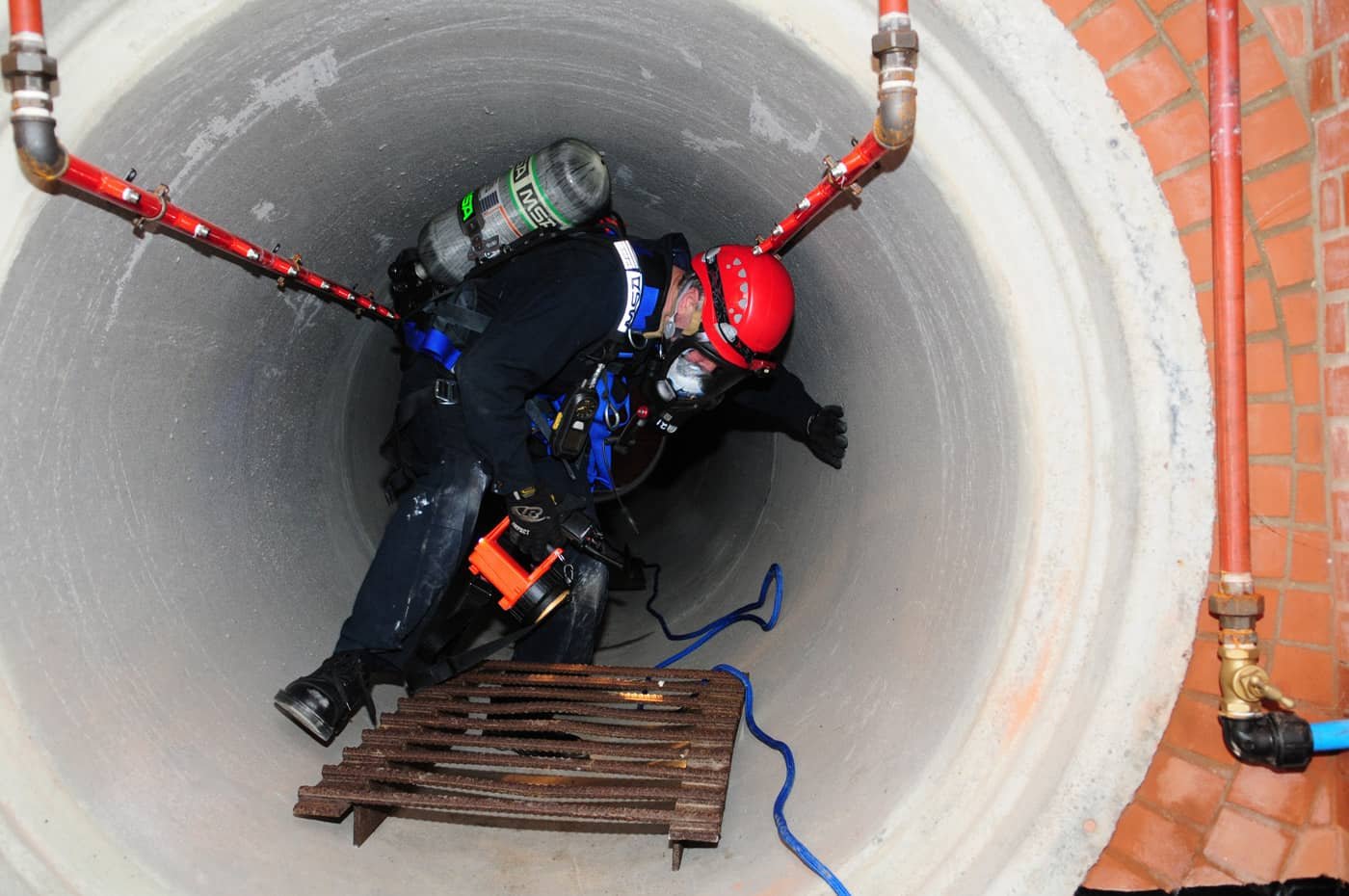Contents
1. Introduction
Confined spaces are one of the most hazardous work environments in construction. They are not designed for continuous human occupancy, have limited entry/exit points, and often contain harmful atmospheres or other physical hazards. Common confined spaces at construction sites include manholes, tunnels, tanks, silos, pipelines, and shafts.
Accidents in confined spaces often result in multiple fatalities, as rescuers also get exposed when proper procedures are not followed. Hence, strict adherence to safety standards like OSHA 29 CFR 1926.1200 (Confined Spaces in Construction), BIS 11972:1987 (CODE OF PRACTICE FOR SAFETY PRECAUTIONS TO BE TAKEN WHEN ENTERING A SEWERAGE SYSTEM), and provisions of the Factories Act, 1948 is important.
2. Definition of Confined Space
According to OSHA 29 CFR 1910.146 and 29 CFR 1926 Subpart AA:
A confined space is an area that:
- Has limited or restricted means of entry or exit,
- Is not designed for continuous occupancy, and
- Has the potential to contain hazardous atmospheres.
BIS 11972:1987 aligns with this definition and emphasizes Indian worksite practices, particularly construction and maintenance activities in Sewerage.
3. Hazards in Confined Spaces
Confined spaces present multiple risks are..
- Atmospheric Hazards: Oxygen deficiency (<19.5%), oxygen enrichment (>23.5%), toxic gases (CO, H2S, CH4), and flammable vapors.
- Physical Hazards: Engulfment (sand, water, cement slurry), entrapment, mechanical hazards from equipment, noise, and heat stress.
- Work-Related Hazards: Welding fumes, chemical reactions, dust accumulation, and poor lighting.
- Psychological Hazards: Stress due to claustrophobia and limited mobility.
4. Legal & Regulatory Framework
(a) OSHA Standards
- 29 CFR 1926 Subpart AA (Construction Confined Spaces Rule): Requires identification, atmospheric testing, permits, continuous monitoring, and rescue procedures.
- Permit-Required Confined Spaces (PRCS): Spaces with potential hazards must have a permit system including written authorization before entry.
- Training of workers, attendants, and supervisors is mandatory.
- Rescue services must be available and trained in confined-space entry.
(b) BIS 11972:1987 (CODE OF PRACTICE FOR SAFETY PRECAUTIONS TO BE TAKEN WHEN ENTERING A SEWERAGE SYSTEM)
- Provides Indian-specific guidelines for safe entry and work.
- Covers design considerations, ventilation, illumination, use of personal protective equipment (PPE), and emergency procedures.
- Specifies atmospheric testing prior to entry and continuous monitoring during work.
- Emphasizes training and certification of workers for confined space work.
(c) Factories Act, 1948 (Sections 36 & 36A)
- Prohibits entry into confined spaces until it is made safe by:
- Emptying, cleaning, purging or ventilating,
- Testing the atmosphere by a competent person,
- Issuing a written permit.
- Mandates supervision, protective equipment, and rescue arrangements.
5. Safety Requirements for Confined Space Work
5.1 Pre-Entry Preparations
- Hazard identification and risk assessment.
- Obtain entry permit (if required).
- Isolate the space from hazardous energy (lockout/tagout).
- Ventilate to remove toxic or flammable gases.
5.2 Entry and Work Procedures
- Conduct atmospheric testing (O2, flammable gases, toxic gases).
- Provide PPE: helmets, gloves, safety shoes, respirators, and harnesses.
- Use continuous mechanical ventilation.
- Ensure an attendant remains outside the space at all times.
- Maintain constant communication between entrant and attendant.
5.3 Emergency and Rescue
- Emergency rescue plan must be documented and rehearsed.
- Standby rescue team with tripod, winch, and breathing apparatus.
- Prohibit untrained workers from attempting rescue.
- Notify emergency medical services immediately in case of incident.
6. Best Practices for Construction Sites
- Confined Space Register: Maintain a site-specific list of all confined spaces.
- Permit System: No work without a signed permit from a competent authority.
- Atmospheric Testing Equipment: Calibrated and available on-site.
- Continuous Monitoring: Use fixed or portable gas detectors.
- Training & Drills: Workers should be trained in hazard recognition, PPE use, and rescue.
- Supervision: Competent supervisor to oversee confined space activities.
- Record Keeping: All permits, test results, and training records should be documented.
Confined spaces in construction present severe risks if not managed properly. By following OSHA’s permit-required confined space regulations, adopting BIS 11972:1987, and complying with the Factories Act, 1948, organizations can prevent accidents, protect workers, and ensure legal compliance.
Key Principle: No entry into a confined space without proper testing, ventilation, permit, and rescue arrangements.





